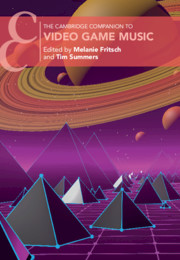Book contents
- The Cambridge Companion to Video Game Music
- Cambridge Companions to Music
- The Cambridge Companion to Video Game Music
- Copyright page
- Contents
- Figures
- Tables
- Musical Examples
- Contributors
- Preface
- A Landmark Timeline of Video Game Music
- Foreword: The Collaborative Art of Game Music
- Introduction
- Part I Chiptunes
- Part II Creating and Programming Game Music
- Part III Analytical Approaches to Video Game Music
- Part IV Realities, Perception and Psychology
- 15 A Step Back from Reality: Sound and Presence in Computer Games and Other Worlds
- 16 Audio and the Experience of Gaming: A Cognitive-Emotional Approach to Video Game Sound
- 17 Psychophysiological Approaches to Sound and Music in Games
- Part V Game Music, Contexts and Identities
- Part VI Beyond the Game
- 24 Producing Game Music Concerts
- Select Bibliography
- Index
16 - Audio and the Experience of Gaming: A Cognitive-Emotional Approach to Video Game Sound
from Part IV - Realities, Perception and Psychology
Published online by Cambridge University Press: 15 April 2021
- The Cambridge Companion to Video Game Music
- Cambridge Companions to Music
- The Cambridge Companion to Video Game Music
- Copyright page
- Contents
- Figures
- Tables
- Musical Examples
- Contributors
- Preface
- A Landmark Timeline of Video Game Music
- Foreword: The Collaborative Art of Game Music
- Introduction
- Part I Chiptunes
- Part II Creating and Programming Game Music
- Part III Analytical Approaches to Video Game Music
- Part IV Realities, Perception and Psychology
- 15 A Step Back from Reality: Sound and Presence in Computer Games and Other Worlds
- 16 Audio and the Experience of Gaming: A Cognitive-Emotional Approach to Video Game Sound
- 17 Psychophysiological Approaches to Sound and Music in Games
- Part V Game Music, Contexts and Identities
- Part VI Beyond the Game
- 24 Producing Game Music Concerts
- Select Bibliography
- Index
Summary
It was June of 1990; I was four years old, waiting with my mom in our car, which was parked on the searing hot asphalt of a mall parking lot. My brother, who was nine, was inside with my father picking out his birthday present. When they finally returned, my brother was carrying a huge grey, black and red box with the words Nintendo Entertainment System printed on the side. Without this day, impatient and blazing hot in my memory, I might never have known Mario and Link and Kid Icarus and Mega Man, and my life would have been much poorer for it. We brought home two games that day: the promotional 3-in-1 game that came with the system (Super Mario Bros./Duck Hunt/Track Meet; 1985), and The Legend of Zelda (1986). It is almost impossible to imagine the rich, diverse game world of Zelda’s Hyrule without its characteristic sounds. How would the player experience the same level of satisfaction in restoring their health by picking up a heart container or lining their coffers with currency without that full, round plucking sound as they apprehend the heart, or the tinny cha-ching of picking up a gemlike rupee (see Example 16.1)?
- Type
- Chapter
- Information
- The Cambridge Companion to Video Game Music , pp. 284 - 301Publisher: Cambridge University PressPrint publication year: 2021



